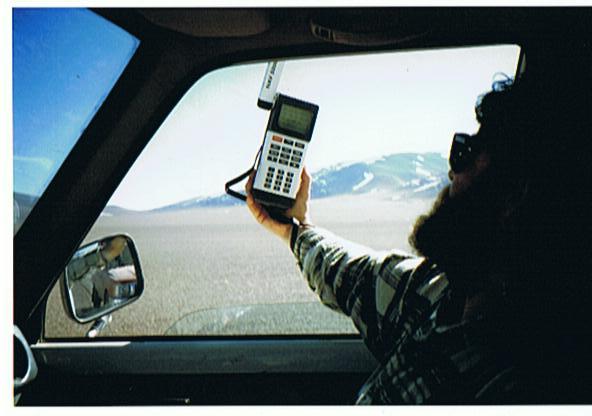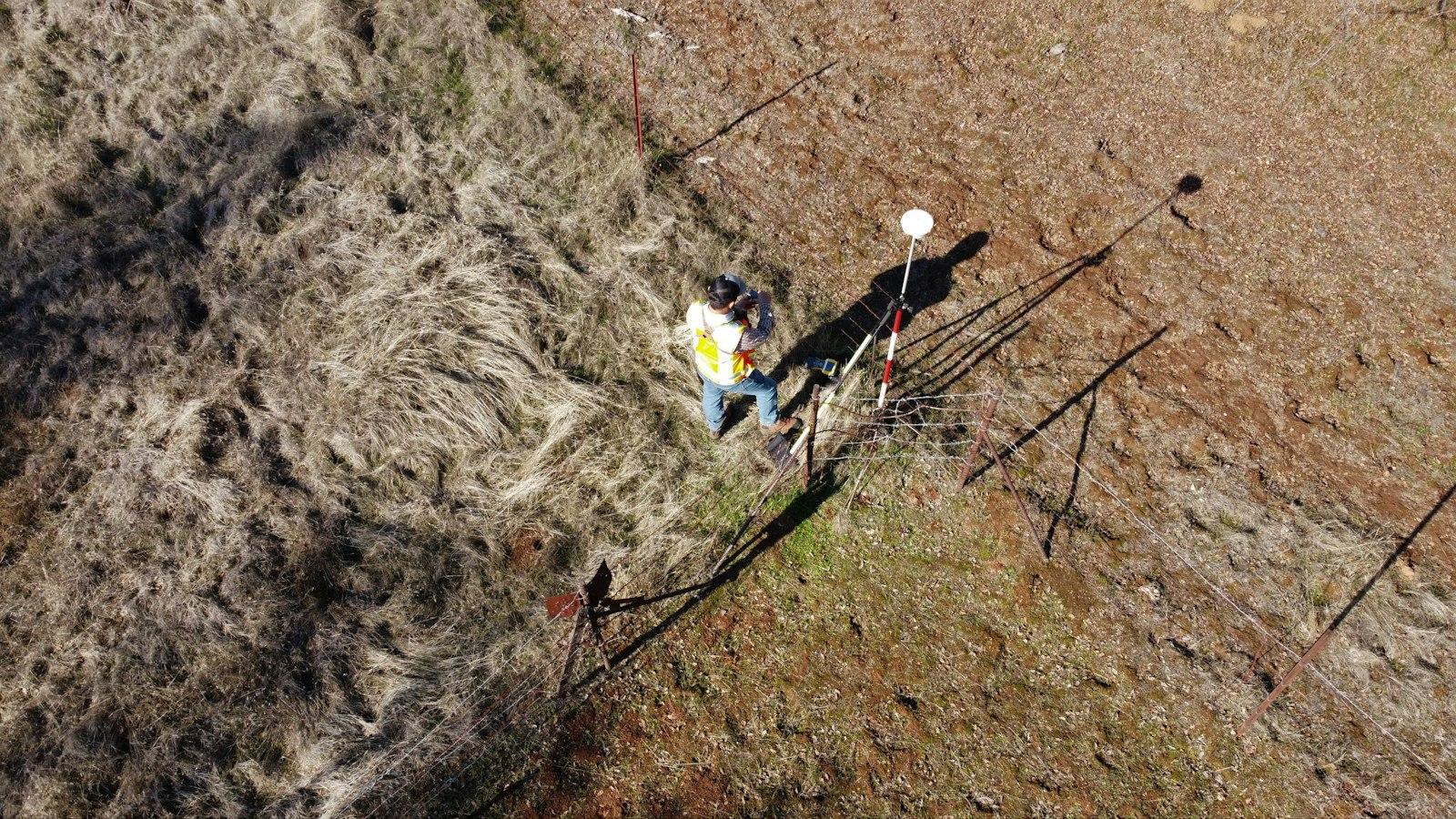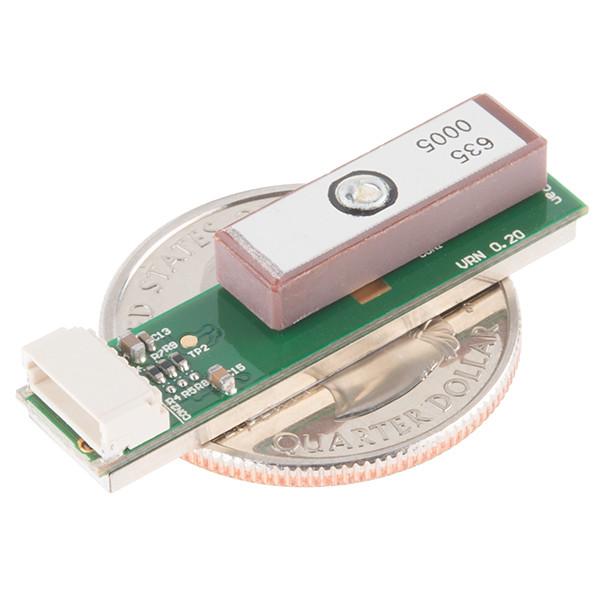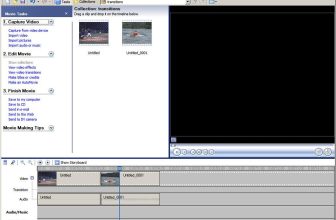
In an era where technology has seamlessly integrated into our daily lives, the Global Positioning System (GPS) receiver has become an indispensable tool for navigation. Whether you are an adventurous explorer or a casual traveler, understanding how to effectively use a GPS receiver can enhance your navigation experience, providing accurate location information and guiding you to your desired destinations with ease. This article aims to provide an informative guide on the basics of using a GPS receiver, helping you navigate through its features and maximizing its potential to navigate the world around you. So, sit back and immerse yourself in this informative journey as we unravel the secrets of mastering a GPS receiver.
Introduction to GPS Receivers
Welcome to our comprehensive guide on how to use a GPS receiver! Whether you’re a hiker, a cyclist, or simply someone who loves exploring the great outdoors, understanding how to navigate using a GPS receiver is an essential skill. In this post, we will take you through the basics of GPS receivers and provide you with step-by-step instructions on how to use them effectively. So let’s get started!
First things first, let’s quickly brush up on what a GPS receiver actually is. GPS stands for Global Positioning System, and a GPS receiver is a device that uses satellite signals to determine your exact location on Earth. It works by receiving signals from multiple satellites in orbit, and then using those signals to calculate your latitude, longitude, and altitude. In simple terms, it tells you exactly where you are and helps you navigate to your desired destination.
Using a GPS receiver may seem daunting at first, but fear not! It’s actually quite simple once you get the hang of it. The first thing you need to do is ensure that your GPS receiver is fully charged and turned on. Most GPS receivers have a power button that you can press and hold to turn them on. Once it’s powered up, it may take a few minutes for the device to acquire satellite signals, so be patient.
Once your GPS receiver has acquired satellite signals, you will see your current location displayed on the screen. Some GPS receivers have touchscreens, while others have buttons to navigate through menus and options. You can use these controls to zoom in and out, pan the map, and access various features of the GPS receiver. Familiarize yourself with these controls to make the most of your device.
One of the most important features of a GPS receiver is its ability to create and follow routes. To create a route, simply enter your desired destination into the GPS receiver. You can use addresses, landmarks, or specific latitude and longitude coordinates. Once you’ve entered your destination, the GPS receiver will calculate the most efficient route for you and guide you turn-by-turn. You can also save and name your routes for future use.

Understanding GPS Technology
GPS, or Global Positioning System, is a technology that has revolutionized navigation and tracking. It uses a network of satellites to provide precise location and time information to users around the world. A GPS receiver is a device that receives these signals and uses them to determine an accurate position on the Earth’s surface. In this post, we will guide you through the steps of using a GPS receiver effectively.
Step 1: Power Up the GPS Receiver
Before you can start using a GPS receiver, make sure it is properly powered up. Most receivers have an on/off button that you need to press to turn them on. Some receivers also require batteries or a power source to function. Once the receiver is powered up, it will start searching for satellite signals.
Step 2: Establish Satellite Connection
To use a GPS receiver, it is essential to establish a connection with GPS satellites. This process may take a few minutes, especially if you are in an area with limited visibility to the sky, such as dense forests or urban canyons. Keep the receiver in an open area and stay stationary until it acquires a sufficient number of satellite signals.
Step 3: Set Your Position and Destination
Once the GPS receiver has established a connection with the satellites, it will be able to determine your current position. Most receivers have a display screen that shows latitude, longitude, and altitude. Use the receiver’s user interface or menu options to set your current position as the starting point. You can also program a destination by entering coordinates or selecting a point of interest from the receiver’s database.
Step 4: Navigate and Follow Directions
After setting your position and destination, the GPS receiver will calculate the best route and provide you with turn-by-turn directions. Pay attention to the receiver’s screen or listen to voice prompts, if available. The receiver may also display additional information such as estimated time of arrival, distance to the destination, and upcoming maneuvers. Follow the directions provided by the receiver to reach your destination efficiently.
Step 5: Utilize Additional Features
GPS receivers often come with extra features that can enhance your navigation experience. These may include waypoints, which allow you to mark specific locations for future reference, and tracklogs, which record your path and can be saved for later analysis. Some receivers also support geocaching, a popular activity that involves finding hidden containers using GPS coordinates. Explore the receiver’s manual or menu options to discover and utilize these additional features.

Key Features to Look for in a GPS Receiver
When it comes to using a GPS receiver, it’s important to understand the key features to look for. These features can greatly enhance your experience and make navigation a breeze. Whether you’re hiking in the wilderness or navigating through a city, here are some key features that you should consider:
Battery Life
One of the most important features to look for in a GPS receiver is battery life. A long-lasting battery is essential, especially if you’re embarking on a long hike or road trip. Look for a device that offers at least 10 hours of battery life, so you won’t have to worry about your device dying in the middle of your journey.
Screen Size and Resolution
The screen size and resolution of a GPS receiver can greatly impact your experience. A larger screen allows for easier viewing and navigation, while a high-resolution display ensures clear and crisp imagery. Look for a device with a screen size of at least 4 inches and a resolution of 480×800 or higher.
Mapping and Routing
The mapping and routing capabilities of a GPS receiver are crucial for accurate navigation. Make sure the device you choose has detailed maps that are regularly updated. Look for features such as turn-by-turn directions, lane assist, and real-time traffic updates. These will help you reach your destination efficiently and avoid any potential roadblocks.
Waterproof and Durability
If you plan on using your GPS receiver in outdoor activities like hiking or camping, it’s essential to choose a device that is waterproof and durable. Look for a device that is rated at least IPX7, meaning it can withstand being submerged in water up to 1 meter deep for 30 minutes. Additionally, look for features such as shock resistance and rugged construction to ensure your device can withstand outdoor conditions.
Wireless Connectivity
Wireless connectivity is another important feature to consider. This allows you to easily update your device’s maps and software without connecting it to a computer. Look for a GPS receiver that offers Wi-Fi or Bluetooth connectivity for seamless updates. Additionally, some devices also offer smartphone integration, allowing you to receive calls, messages, and notifications directly on your GPS device.

Mastering GPS Receiver Usage
HTML, or hyper text markup language, is the backbone of any web page, allowing for the structuring and formatting of content. One important application of HTML is in the usage of GPS receivers, which are crucial in determining accurate location information. In this post, we will explore the various features and functionalities of GPS receivers, and provide you with tips on how to make the most out of your device.
Understanding GPS Receivers
GPS, or Global Positioning System, is a satellite-based navigation system that allows users to pinpoint their exact location anywhere on the planet. A GPS receiver is a device that receives signals from multiple satellites and calculates the user’s position based on the time it takes for these signals to reach the receiver. Understanding the basics of GPS technology is essential to master the usage of GPS receivers.
Key Features and Functionalities
Modern GPS receivers are equipped with a wide range of features and functionalities that go beyond simple location tracking. Some common features include:
-
Real-time tracking: GPS receivers can provide real-time updates on your location, speed, and direction, allowing you to navigate unfamiliar territories with ease.
-
Waypoint navigation: With GPS receivers, you can mark specific locations as waypoints and create routes between them. This is particularly useful for hikers, cyclists, and drivers looking to follow a predetermined path.
-
Mapping and geocaching: Many GPS receivers come with built-in maps or allow for map downloads. This enables you to explore new areas, find points of interest, and even engage in the popular outdoor treasure hunt activity known as geocaching.
Tips for Effective GPS Receiver Usage
To make the most out of your GPS receiver, consider the following tips:
-
Maintain a clear view of the sky: GPS signals rely on line-of-sight communication with satellites, so it’s important to keep your receiver unobstructed by tall buildings, dense foliage, or other objects that could interfere with signal reception.
-
Regularly update your device: Manufacturers often release firmware updates that can improve the performance and reliability of your GPS receiver. Make sure to check for updates periodically and install them as necessary.
-
Calibrate your compass: Many GPS receivers have a built-in electronic compass that aids in navigation. It is important to calibrate this compass regularly to ensure accurate readings.
-
Carry spare batteries or use a power bank: GPS receivers consume a significant amount of power, especially when using features like continuous tracking or backlight display. To avoid running out of battery during your outdoor adventures, always carry spare batteries or a portable power bank.
-
Learn to read the coordinates: GPS receivers usually provide latitude and longitude coordinates as the primary means of location information. Take the time to understand how to read and interpret these coordinates, as they form the basis for accurate navigation and communication in outdoor activities.
Conclusion
Mastering the usage of GPS receivers is essential for anyone who relies on accurate location information. By understanding the basics of GPS technology, familiarizing yourself with the features of your device, and following these tips for effective usage, you’ll be well-equipped to navigate unfamiliar areas and make the most of your GPS receiver. So grab your device, explore new territories, and embark on exciting adventures with confidence!
Advanced Tips for Optimal GPS Navigation
When it comes to using a GPS receiver, there are a few advanced tips that can help you enhance your navigation experience and make the most out of your device. These tips will not only ensure accurate positioning but also save you time and frustration on the road. Whether you are a seasoned GPS user or just starting out, these advanced techniques will take your navigation skills to the next level.
1. Update your GPS regularly
To ensure accurate and reliable navigation, it is crucial to keep your GPS receiver updated with the latest software and maps. Manufacturers often release software updates that fix bugs and improve overall performance. Additionally, updating your maps will ensure that you have the latest road information, including new routes and points of interest. Most GPS devices allow you to connect to your computer for easy updates. Remember to check for updates periodically to stay on top of changes.
2. Customize your GPS settings
Make your GPS receiver work for you by customizing the settings according to your preferences and needs. Adjust the volume and screen brightness to optimize visibility. Choose the map view that suits you best, such as 2D or 3D, and adjust the zoom level accordingly. Furthermore, take advantage of advanced features like voice-guided directions and real-time traffic updates. By personalizing your GPS settings, you can ensure a more tailored and user-friendly experience.
3. Utilize waypoints and favorites
Waypoints and favorites are incredibly useful features that can enhance your navigation journeys. Waypoints allow you to mark specific locations along your route, such as gas stations, restaurants, or scenic spots. They not only help you plan your journey but also provide a convenient way to navigate to these places in the future. Favorites, on the other hand, are locations you frequently visit, such as your workplace or a friend’s house. By saving them as favorites, you can easily access and navigate to these places without having to type in the address every time.
4. Take advantage of route optimization
Save time and fuel by utilizing the route optimization feature on your GPS receiver. This feature calculates the most efficient route based on factors like traffic conditions, road type, and distance. By selecting this option, you can avoid unnecessary detours and congestion, ensuring a smoother and faster journey. Some GPS devices even allow you to customize the optimization settings, allowing you to prioritize certain criteria like avoiding toll roads or highways. Experiment with this feature to find the route that best suits your preferences.
5. Backup your GPS data
Just like any electronic device, it’s important to backup your GPS data to prevent potential data loss. Some GPS receivers offer the ability to back up your tracks, routes, and waypoints to a computer or external storage device. This not only serves as a safety net in case your device gets lost or damaged but also allows you to transfer your data to other GPS devices seamlessly. Take the time to regularly back up your GPS data to ensure peace of mind and the ability to restore your valuable information if needed.
Q&A
Q: What is a GPS receiver?
A: A GPS receiver is a device that receives signals from multiple satellites to determine its precise location on Earth.
Q: How does a GPS receiver work?
A: GPS receivers receive signals from at least four satellites in orbit around the Earth. By analyzing the time it takes for the signals to travel from the satellites to the receiver, it can calculate the distance between the receiver and each satellite. Using this information, the receiver can then triangulate its exact position on Earth.
Q: What can I use a GPS receiver for?
A: GPS receivers are commonly used for navigation purposes, allowing users to determine their exact location, find the shortest or fastest route to a destination, and receive real-time driving directions. They can also be utilized for outdoor activities such as hiking, biking, and geocaching.
Q: How do I use a GPS receiver for navigation?
A: To use a GPS receiver for navigation, you need to ensure it is properly powered and has a clear view of the sky. Turn on the device and wait for it to acquire satellite signals. Once connected, you can enter your desired destination or select a point of interest. The receiver will then calculate the most efficient route and provide you with step-by-step instructions.
Q: What features should I look for in a GPS receiver?
A: When choosing a GPS receiver, consider features such as accuracy, battery life, screen size and resolution, user-friendly interface, speed and ease of acquiring satellite signals, availability of real-time traffic updates, and any additional functions like weather forecasting or compatibility with wearable devices.
Q: Can GPS receivers work without an internet connection?
A: Yes, GPS receivers work independently of an internet connection. They rely solely on signals received from satellites to determine location and provide navigation instructions. However, some receivers may offer additional features that require an internet connection, such as real-time traffic updates or downloading maps.
Q: How accurate are GPS receivers?
A: Most GPS receivers can provide location accuracy within a few meters. However, factors like obstructed satellites, atmospheric conditions, and the quality of the receiver can affect accuracy. In open areas with good satellite visibility, modern GPS receivers can achieve accuracy within a few centimeters using differential GPS or Real-Time Kinematics (RTK) techniques.
Q: Can GPS receivers be used worldwide?
A: Yes, GPS receivers can be used anywhere on Earth as long as they have a clear line of sight with at least four GPS satellites. The Global Positioning System (GPS) is a global navigation satellite system that covers the entire planet.
Q: Should I rely solely on a GPS receiver for navigation?
A: While GPS receivers are highly reliable, it is generally recommended to have alternative means of navigation as a backup, especially when going on remote or off-road adventures. Carrying a physical map, compass, or using other navigation tools can help in situations where GPS signals might be obstructed or the device encounters technical issues.
Q: How do I maintain and update my GPS receiver?
A: To ensure optimal performance, keep your GPS receiver clean and protected from extreme temperatures and moisture. Regularly update the device’s software and firmware to benefit from the latest improvements and correct any potential bugs. Check the manufacturer’s website or contact customer support for specific instructions on how to update your GPS receiver model. In conclusion, using a GPS receiver can be a valuable tool in navigating your way through unfamiliar territories or even exploring the great outdoors. By following the steps outlined in this article, you are now equipped with the knowledge to effectively use a GPS receiver for accurate positioning and navigation. Remember to always ensure your device is fully charged and updated with the latest maps and software to optimize its functionality. Whether you’re a hiker, driver, or traveler, a GPS receiver can enhance your journey by providing real-time information and peace of mind. Embrace this technology and discover a whole new level of confidence and convenience in your navigational pursuits. Happy exploring!






